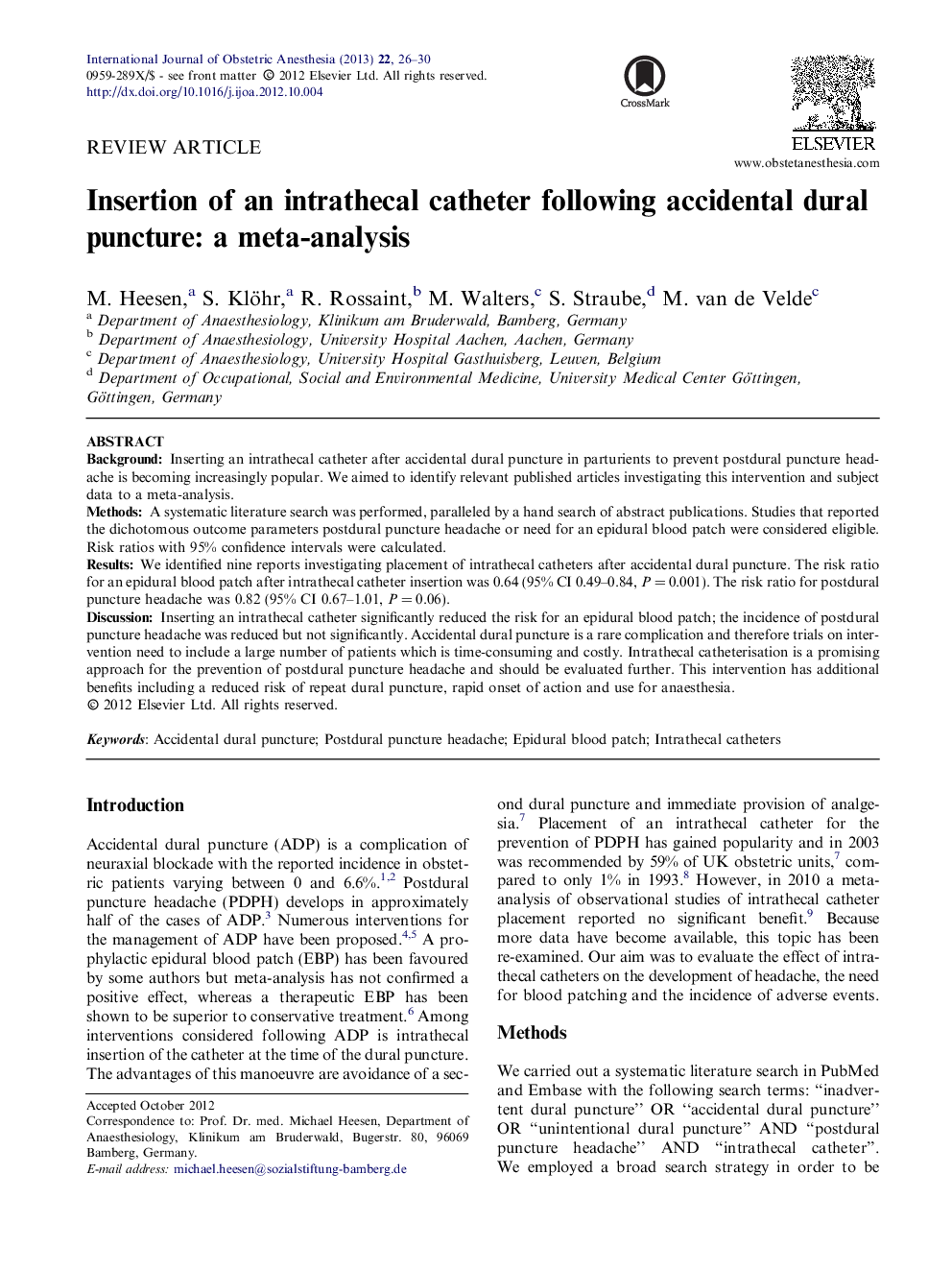| Article ID | Journal | Published Year | Pages | File Type |
|---|---|---|---|---|
| 2757862 | International Journal of Obstetric Anesthesia | 2013 | 5 Pages |
BackgroundInserting an intrathecal catheter after accidental dural puncture in parturients to prevent postdural puncture headache is becoming increasingly popular. We aimed to identify relevant published articles investigating this intervention and subject data to a meta-analysis.MethodsA systematic literature search was performed, paralleled by a hand search of abstract publications. Studies that reported the dichotomous outcome parameters postdural puncture headache or need for an epidural blood patch were considered eligible. Risk ratios with 95% confidence intervals were calculated.ResultsWe identified nine reports investigating placement of intrathecal catheters after accidental dural puncture. The risk ratio for an epidural blood patch after intrathecal catheter insertion was 0.64 (95% CI 0.49–0.84, P = 0.001). The risk ratio for postdural puncture headache was 0.82 (95% CI 0.67–1.01, P = 0.06).DiscussionInserting an intrathecal catheter significantly reduced the risk for an epidural blood patch; the incidence of postdural puncture headache was reduced but not significantly. Accidental dural puncture is a rare complication and therefore trials on intervention need to include a large number of patients which is time-consuming and costly. Intrathecal catheterisation is a promising approach for the prevention of postdural puncture headache and should be evaluated further. This intervention has additional benefits including a reduced risk of repeat dural puncture, rapid onset of action and use for anaesthesia.
